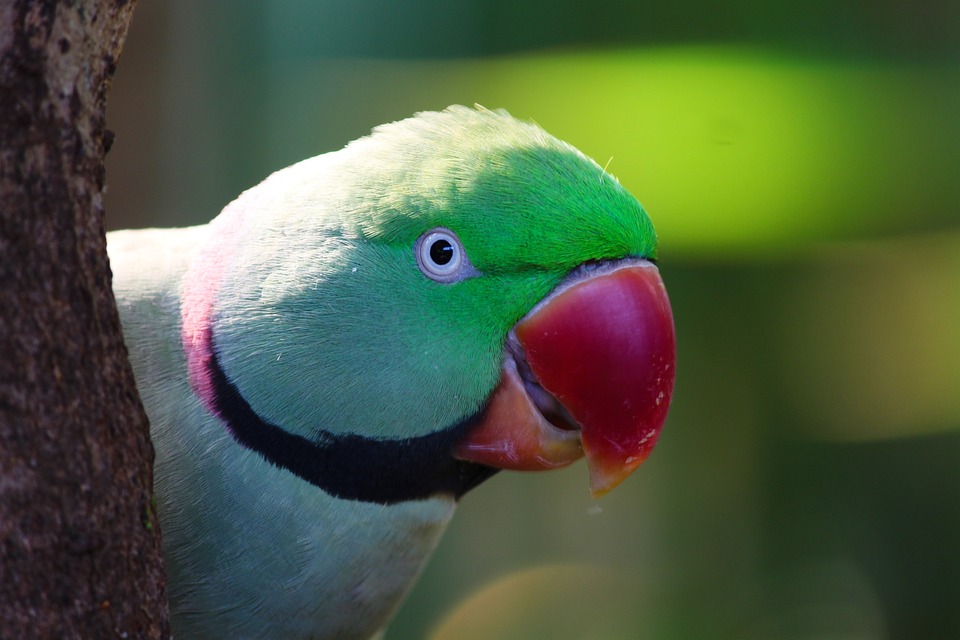Title: Discouraging Aggressive Behaviors in Parrots: Effective Training Techniques
Subtitle: Promoting Harmony among Parrots through Positive Reinforcement and Behavioral Modification
Introduction:
Parrots are social creatures known for their intelligence and strong bonds with their human caregivers and fellow avian companions. However, occasionally, parrots may exhibit aggressive behaviors towards other parrots, which can lead to stress, injuries, and a negative living environment. In this article, we will explore effective training techniques to discourage parrots from engaging in aggressive behaviors with their feathered friends, ensuring a harmonious and peaceful coexistence.
I. Understanding Aggressive Behaviors in Parrots
1.1 Types of Aggressive Behaviors:
Parrots can display various types of aggressive behaviors, including biting, chasing, lunging, screaming, and territoriality. It is essential to recognize and understand these behaviors to address them effectively.
1.2 Identifying the Triggers:
Identifying the triggers that lead to aggression is crucial in preventing and managing it. Common triggers may include resource guarding, fear, hormonal changes, lack of socialization, or previous negative experiences.
1.3 Recognizing Body Language Cues:
Parrots communicate through body language, and recognizing their cues can help identify when aggression is imminent. Signs such as raised feathers, dilated pupils, stiff body posture, and vocalizations can signal an aggressive response.
1.4 The Importance of Early Intervention:
Early intervention is vital in addressing aggressive behaviors. The longer these behaviors persist, the more challenging they can be to modify. It is crucial to address aggression as soon as it is observed to prevent escalation.
II. Implementing Positive Reinforcement Training
2.1 Establishing Trust and Bonding:
Building a strong bond and trust with your parrot is key to successful training. Spend quality time with your parrot, engage in positive interactions, and create a safe environment to foster trust.
2.2 Reward-Based Training Methods:
Positive reinforcement involves rewarding desirable behaviors with treats, praise, or play. Reinforcing good behavior encourages parrots to repeat those actions and discourages aggression.
2.3 Reinforcing Desirable Behaviors:
Reward your parrot whenever they exhibit calm and non-aggressive behaviors. This positive reinforcement strengthens the association between the desired behavior and the reward, encouraging them to engage in these behaviors more frequently.
2.4 Redirecting Aggression through Training Games:
Engaging parrots in training games and activities can redirect their aggressive behavior into more desirable actions. These games can include targeting, recall exercises, and interactive toys to keep their minds engaged.
III. Environmental Enrichment and Behavioral Modification
3.1 Providing Sufficient Physical and Mental Stimulation:
Parrots require both physical and mental stimulation to prevent boredom and frustration, which can contribute to aggression. Offer a variety of toys, perches, and activities that challenge their cognitive abilities.
3.2 Utilizing Foraging Toys and Puzzles:
Foraging toys and puzzles provide mental stimulation and mimic natural foraging behaviors. By encouraging parrots to work for their food, these toys can redirect their energy and reduce aggression.
3.3 Creating Safe Spaces for Each Parrot:
Parrots need their own space where they feel secure and can retreat when they feel overwhelmed. Providing separate cages or designated areas can help prevent territorial aggression and promote peaceful coexistence.
3.4 Promoting Positive Interaction and Socialization:
Gradual and supervised socialization with other parrots can help reduce aggression. Introduce parrots to each other in a controlled environment and reward positive interactions. Monitoring their behavior during these interactions is crucial to prevent any negative experiences.
IV. Frequently Asked Questions (FAQs)
FAQ 1: Why do parrots become aggressive towards other parrots?
FAQ 2: Can aggressive behaviors be completely eliminated in parrots?
FAQ 3: How long does it take to see positive changes in parrot behavior?
FAQ 4: Should I separate aggressive parrots permanently?
FAQ 5: Are there any specific training techniques for different parrot species?
Conclusion:
By applying positive reinforcement training, environmental enrichment, and behavioral modification strategies, parrot owners can effectively discourage aggressive behaviors and foster a peaceful environment for their feathered companions. Remember, patience, consistency, and understanding are key when working with parrots. With time and effort, you can help create a harmonious and enjoyable social dynamic among your parrot flock.
Note: If you have any concerns or questions regarding your parrot’s behavior, it is recommended to consult with an avian behaviorist or a certified parrot trainer for personalized guidance.









